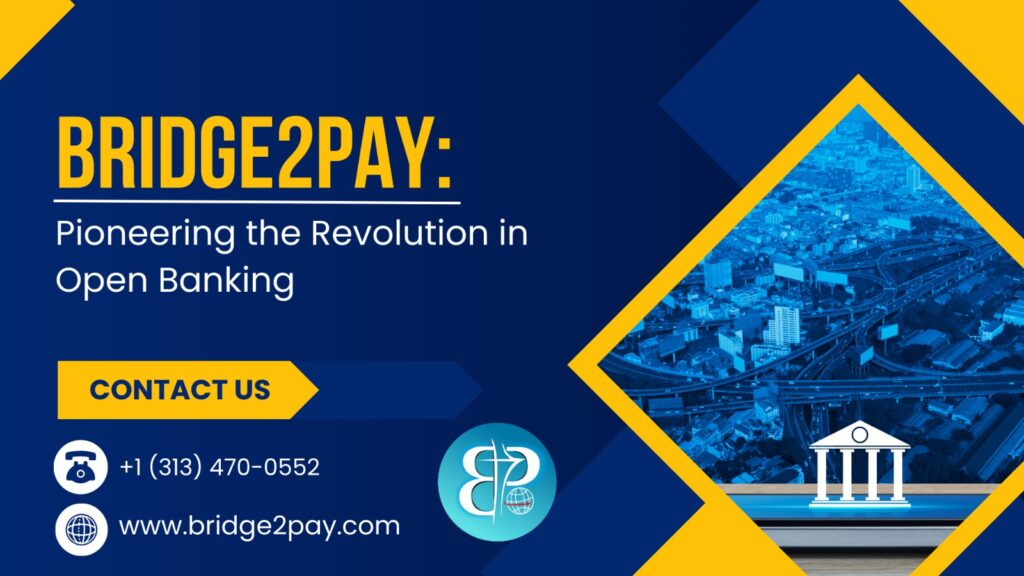
Open Banking: Unlocking Financial Services’ Future
Open Banking – Open Fintech is quickly changing the global financial environment by allowing users and companies to safely exchange financial information with third-party providers via APIs (Application Programming Interfaces). This novel approach encourages competition, improves customization, and advances financial inclusion. Open fintech is changing how financial services are accessed, provided, and used—it’s not merely a technology change. The advantages of open banking, its difficulties, and the worldwide environment influencing its development will all be covered in this blog.
What is Open Banking?
Open Fintech is a platform that allows customers to control their financial data. With your authorization, third-party providers can use this information to deliver new services such as budgeting tools, payment solutions, and loan comparisons. The benefits are numerous:
Enhanced Transparency: Customers receive a better understanding of their financial health.
Seamless Transactions: Faster and safer payment methods.
Personalized Services: Financial goods tailored to each individual’s needs.
Global Leaders in Open Banking.
Several companies are driving the open banking movement, offering cutting-edge solutions to both corporations and consumers:
Plaid: Plaid connects over 11,000 financial institutions in the United States, Canada, and Europe, enabling financial products used by millions of people every day.
Tink: A European leader, Tink connects to over 3,400 institutions to provide services such as payment initiation, data enrichment, and personal finance management.
TrueLayer provides global financial connectivity and specializes in account verification, data access, and payments across Europe and Australia.
Yapily: Yapily focuses on API architecture, allowing organizations to seamlessly access financial data and conduct safe payments.
Token.io facilitates account-to-account payments and offers a uniform platform for data aggregation and secure transactions.
Open-Banking Advantages: Transforming Financial Services
Numerous advantages provided by open banking are revolutionizing how financial organizations communicate with their clientele. Personalized services, more competition, and the development of new revenue streams are all examples of its effects.
Improved Experience for Customers
The capacity to provide a highly customized customer experience is at the heart of Open Banking. Open Banking facilitates easy integration with third-party apps like lending services, investing platforms, and budgeting tools by giving people control over and access to their financial data. Financial management is now simpler, more effective, and customized to meet personal needs thanks to these developments.
Customers can, for instance, connect their bank accounts to applications that offer automated savings programs, real-time information about their spending habits, and investment recommendations. It enables consumers to select the finest financial solutions for their individual needs, a level of personalization that was previously unattainable within the constraints of traditional banking models.
Enhanced Competition and Innovation
Fintech businesses can now compete with traditional financial institutions on an even playing field thanks to Open Banking. It gives new players in the market access to financial data, allowing them to create cutting-edge solutions that provide better services at affordable costs. Customers gain from more options, lower costs, and better services as a result of the increased competition.
To stay relevant, traditional banks must also innovate and work with fintechs. In a continually changing landscape, this dynamic environment ensures that customers obtain the best services possible by encouraging continuous development in the financial industry.
New Prospects for Bank Revenue in Open Banking
By making their APIs available to outside suppliers, banks can take advantage of Open Banking and generate additional income. Banks become facilitators of a larger financial ecosystem rather than just service providers. Banks can target underserved client segments and investigate specialized markets by collaborating with fintechs.
For example, banks and startups can work together to provide specialized financial products like customized insurance plans or small business loans, creating new revenue streams and improving consumer happiness.
Difficulties with Open Banking Implementation
Notwithstanding its potential, OB has several issues that need to be resolved if it is to succeed in the long run. These include issues with consumer trust, regulatory compliance, and data security.
Security and Privacy of Data
The safeguarding of private financial information is one of the biggest issues with open banking. Data breaches and hacks are more likely when data is shared across platforms, which can erode customer trust. Open Banking ecosystems must put strong security measures in place to reduce these dangers, such as multi-factor authentication, strong encryption, and real-time monitoring for questionable activities.
Adherence to Regulations in Open Banking
Regulations that guarantee consumer safety and data security are crucial to Open Banking’s success. However, there are regional variations in these regulations, which makes worldwide harmonization difficult.
Other regions are gradually catching up, but Europe’s PSD2 directive has set a standard by requiring banks to share client data with other parties only with consent. While nations like Australia and Singapore are creating regulations to encourage safe data exchange, the United States’ lack of a uniform regulatory framework has hindered the adoption of OB.
Governments, financial institutions, and fintech startups must work together to create uniform and efficient compliance standards in order to navigate these regulatory hurdles.
Customer Knowledge and Confidence
While some customers are hesitant to divulge their financial information, many are still ignorant of the advantages. Adoption must be fueled by trust, which may be developed via open communication about data usage, strong security protocols, and observable advantages.
Fintechs and financial institutions need to collaborate to inform customers about how Open Banking can improve their financial health by providing more control, ease, and individualized services.
The International Environment and Prospects of Open Banking

There are notable regional differences in the adoption of Open banking with some markets at the forefront and others still in the early phases of growth. The future is being shaped by several new trends that are developing as the ecosystem continues to change.
European Regional Developments
Thanks to the PSD2 directive, Europe has been leading the way in the adoption of Open Banking. The use of open banking has increased quickly in nations like the UK, where millions of customers are taking advantage of cutting-edge financial services that provide more control and openness over personal data.
America
The absence of a uniform regulatory framework has caused Open Banking adoption in the US to be slower. Broader data-sharing agreements are being pushed for, meanwhile, by market-driven initiatives and the expanding power of fintech companies.
Asia-Pacific
With legal frameworks like Australia’s Consumer Data Right (CDR) laying the groundwork for safe and creative data-sharing arrangements, Australia and Singapore are spearheading the Asia-Pacific movement.
India
India is in a unique position to lead in OB thanks to its strong digital infrastructure. Underserved people can now more easily access financial services thanks to initiatives like the Account Aggregator architecture and the extensive adoption of the Unified Payments Interface (UPI), which are promoting financial inclusion and innovation.
New Developments in Open Banking
Finance Embedded
The integration of financial services into non-financial platforms, including e-commerce, retail, and healthcare, is made possible by open banking. Through a smooth user experience, this trend—integrated finance—enables customers to access financial goods directly within the platforms they use daily.
AI-Powered Customization
Open Banking is becoming more personalized thanks in large part to artificial intelligence. AI may provide customers with preemptive insights, individualized product recommendations, and customized financial advice by evaluating consumer data.
The Significance of Open Banking
There are several advantages to open banking:
Improved Experience for Customers
Open banking makes it possible to provide individualized financial services like investment advice, customized lending offers, and budgeting tools by utilizing real-time data. With tools tailored to their individual needs, customers improve their financial management.
Enhanced Rivalry
By allowing fintech firms to compete with traditional banks, open fintech levels the playing field. Innovation is stimulated, expenses are reduced, and service quality is enhanced by this competition.
Inclusion of Finances
Open banking promotes social inclusion and economic progress by giving underbanked and unbanked communities access to accessible and reasonably priced financial services.
Transactions that are transparent and safe
Open banking guarantees data privacy and secure transactions through standardized APIs and strict security protocols, fostering user confidence.
Bridge2Pay: Pioneering the Revolution in Open Banking

Our specialty at Bridge2Pay is offering cutting-edge financial solutions that capitalize on open banking. Here’s how we’re contributing:
Smooth Payment Methods
To provide safe and easy payment experiences, our intelligent payment gateway incorporates open banking APIs. Bridge2Pay guarantees real-time transactions with unmatched convenience for both consumers and businesses.
Financial Services Driven by Data
Businesses are empowered by Bridge2Pay’s actionable insights from open banking data. Our analytics technologies support revenue development, enhance customer retention, and create tailored offers.
Worldwide Presence
We are not limited to any one location, and neither is open banking. Bridge2Pay is a global financial services provider that links consumers and businesses across national boundaries.
Compliance and Security
Bridge2Pay is a reliable partner that complies with global data protection laws, guaranteeing the security and legality of every transaction. For optimal security, our technology makes use of multi-factor authentication and sophisticated encryption.
The Prospects for Open Bankings
The open banking ecosystem is changing quickly as a result of new laws and technological advancements. Its powers will be further enhanced by trends like artificial intelligence, real-time payments, and embedded finance. To deliver best-in-class solutions, we at Bridge2Pay are dedicated to staying ahead of these trends through constant innovation.
For Open Solutions, why use Bridge2Pay?
To fully realize the promise of open fintech systems, selecting the appropriate partner is essential. This is what makes Bridge2Pay unique:
Open Banking Expertise: Bridge2Pay has years of experience and a thorough understanding of the intricacies of open banking, which allows us to provide customized solutions that satisfy a range of company requirements.
End-to-End Integration: We offer smooth open banking API integration, guaranteeing a hassle-free experience for both customers and enterprises.
Innovative Technology: To deliver individualized financial services and useful insights, our platform makes use of state-of-the-art technologies like artificial intelligence (AI) and data analytics.
Scalable Solutions: Our solutions are made to expand with your business, whether you’re a startup or an established company. This makes us a dependable long-term partner.
In conclusion
Bridge2Pay is pleased to be at the forefront of the financial transformation brought about by open banking. We’re building a world where financial services are more intelligent, available, and safe than ever before by maximizing the potential of financial data.
Explore the financial future with Bridge2Pay. Get in touch with us right now to find out how we can use the power of open banking to change your financial path.